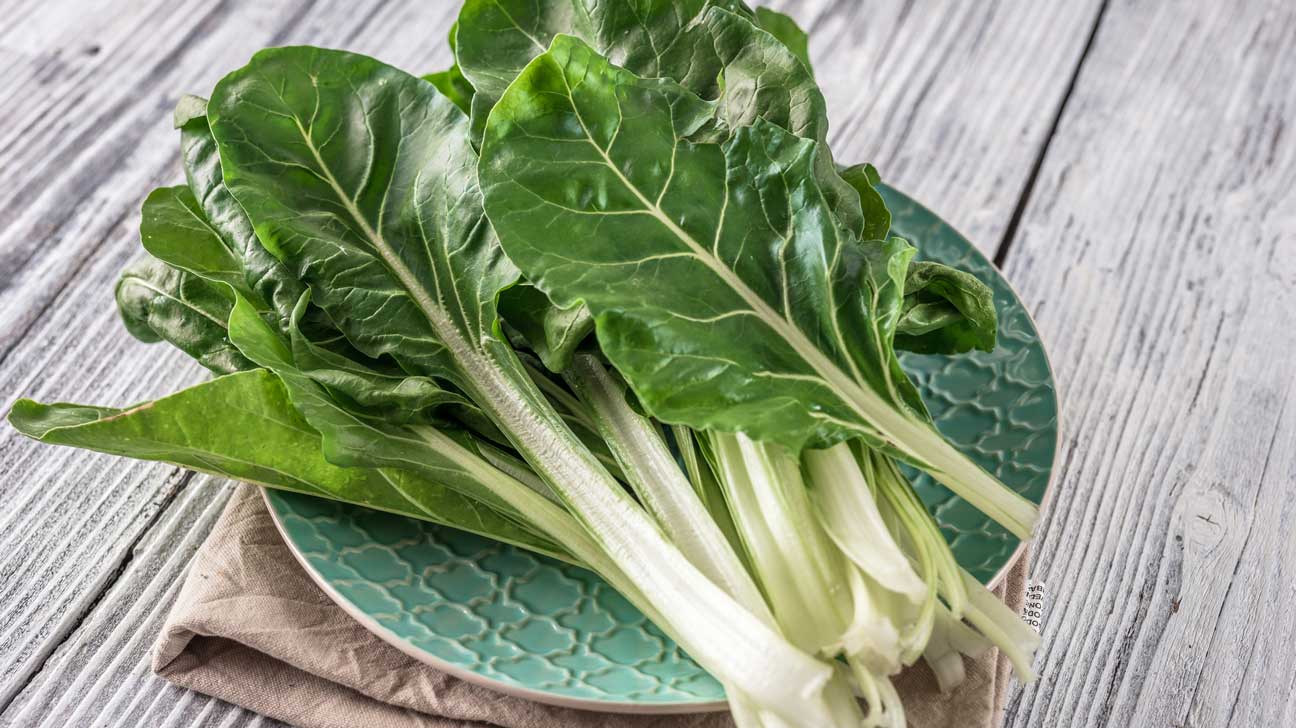
Chard, often overshadowed by its leafy cousins like spinach and kale, deserves a spotlight for its unique benefits and versatility. Did you know that chard, also known as Swiss chard, is packed with vitamins A, C, and K? This leafy green not only boosts your immune system but also supports bone health. But that's not all—chard is a powerhouse of antioxidants, which help fight inflammation and chronic diseases. Whether you're a seasoned chef or a home cook, incorporating chard into your meals can be both delicious and nutritious. From sautéing to steaming, this vegetable adapts to various cooking methods, making it a kitchen favorite. Ready to learn more about this underrated superfood? Let's dive into 30 fascinating facts about chard!
Key Takeaways:
- Chard is a nutrient-packed leafy green that supports vision, bone health, and digestion. It's been enjoyed for centuries and comes in colorful varieties, making it a versatile and delicious addition to any meal.
- Growing chard at home is easy and rewarding. With the right conditions and care, you can enjoy a bountiful harvest of this nutritious vegetable, even in small spaces like balconies or patios.
What is Chard?
Chard, also known as Swiss chard, is a leafy green vegetable often used in Mediterranean cuisine. It's packed with nutrients and offers numerous health benefits. Let's dive into some fascinating facts about this versatile vegetable.
Nutritional Benefits of Chard
Chard is not just any leafy green; it’s a powerhouse of nutrients. Here are some key nutritional benefits that make chard a must-have in your diet.
- Chard is rich in vitamins A, C, and K, which are essential for maintaining good vision, a strong immune system, and healthy bones.
- It contains magnesium, which helps regulate muscle and nerve function, blood sugar levels, and blood pressure.
- Iron in chard aids in the production of hemoglobin, which carries oxygen in the blood.
- Fiber in chard promotes healthy digestion and can help prevent constipation.
- Antioxidants like beta-carotene and lutein in chard help protect cells from damage caused by free radicals.
Historical Background of Chard
Chard has a rich history that dates back thousands of years. Here are some intriguing historical facts about this leafy green.
- Chard was first cultivated by the ancient Greeks and Romans, who valued it for its medicinal properties.
- The name "Swiss chard" originated in the 19th century, even though the plant is not native to Switzerland.
- Chard was often used in medieval European cuisine, particularly in soups and stews.
- The plant was brought to the Americas by European settlers in the 16th century.
- Chard has been a staple in Mediterranean diets for centuries, especially in countries like Italy and Spain.
Different Varieties of Chard
Chard comes in several varieties, each with its unique characteristics. Here are some of the most popular types.
- Rainbow chard features stalks in a variety of colors, including red, yellow, and orange.
- Fordhook Giant is known for its large, crinkled leaves and thick white stems.
- Rhubarb chard has deep red stems and dark green leaves, resembling rhubarb.
- Lucullus chard is named after the Roman general Lucullus and has pale green leaves and white stems.
- Bright Lights chard is a mix of different colored stalks, making it visually appealing in gardens and dishes.
Culinary Uses of Chard
Chard is incredibly versatile in the kitchen. Here are some ways you can incorporate it into your meals.
- Sautéed chard with garlic and olive oil makes a simple yet delicious side dish.
- Chard leaves can be used as a wrap for fillings like rice, meat, or vegetables.
- Chard stems can be pickled or added to soups for extra flavor and crunch.
- Chard can be blended into smoothies for a nutrient boost without altering the taste significantly.
- Chard can be added to pasta dishes, casseroles, and frittatas for added nutrition and color.
Health Benefits of Chard
Beyond its nutritional value, chard offers several health benefits. Here are some reasons to include it in your diet.
- Chard helps reduce inflammation due to its high content of antioxidants and phytonutrients.
- It supports heart health by lowering blood pressure and reducing cholesterol levels.
- Chard can aid in weight loss because it's low in calories but high in fiber, keeping you full longer.
- It promotes bone health thanks to its high levels of vitamin K and calcium.
- Chard may improve brain function due to its rich supply of vitamins and minerals that support cognitive health.
Growing Chard at Home
Chard is relatively easy to grow, making it a great addition to home gardens. Here are some tips for cultivating your own chard.
- Chard prefers cool weather and can be planted in early spring or late summer.
- It thrives in well-drained soil with plenty of organic matter.
- Chard needs regular watering to keep the soil consistently moist but not waterlogged.
- Harvest chard leaves when they are young and tender for the best flavor.
- Chard can be grown in containers, making it suitable for small spaces like balconies or patios.
The Final Scoop on Chard
Chard isn't just another leafy green. Packed with vitamins, minerals, and antioxidants, it’s a powerhouse for your diet. Whether you’re tossing it in a salad, sautéing it, or adding it to soups, this versatile veggie brings both flavor and nutrition to the table. Plus, growing chard in your garden is a breeze, making it a great choice for both novice and seasoned gardeners.
From its vibrant colors to its health benefits, chard stands out. It’s not just good for you; it’s also easy to incorporate into meals. So next time you’re at the grocery store or planning your garden, consider adding chard to your list. Your body will thank you, and your taste buds will too.
Frequently Asked Questions
Was this page helpful?
Our commitment to delivering trustworthy and engaging content is at the heart of what we do. Each fact on our site is contributed by real users like you, bringing a wealth of diverse insights and information. To ensure the highest standards of accuracy and reliability, our dedicated editors meticulously review each submission. This process guarantees that the facts we share are not only fascinating but also credible. Trust in our commitment to quality and authenticity as you explore and learn with us.


